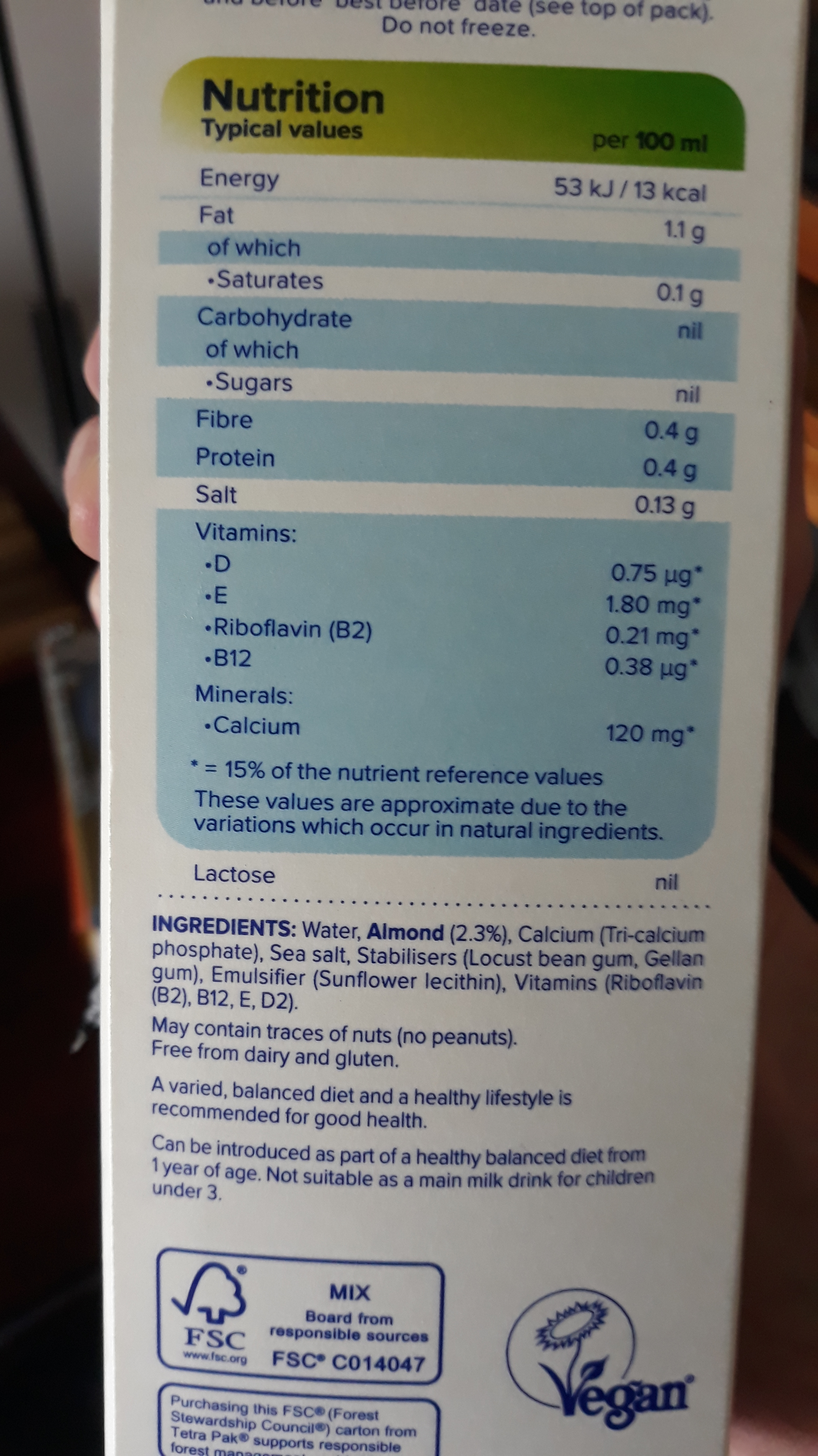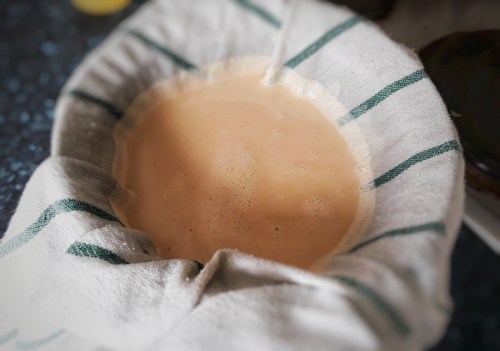Over recent years, as we have become more aware of people’s food intolerances and allergies there has been a great rise in the amount of plant-based milks consumed in the western world. We’ve also realised that there are many benefits associated with the cutting down of animal products in our diets. One of these plant milks – almond milk – is actually having a Renaissance because it was a food that used to be consumed in abundance in mediaeval Europe. Indeed, if I was writing this 20 years ago, it would be appearing in my ‘Forgotten Foods’ series on the blog.

As you may know, mediaeval Christians fasted a lot. There were two great fasting episodes: Advent and Lent. Every Wednesday, Friday and Saturdays was a fast day, meaning that around half of the days of the year were spent fasting. No meat or animal produce was allowed to be eaten, except for fish which was considered cool and calming and so appropriate for these days of solemnity.

Just like the people do today, mediaeval folk tried to make alternative products that could fill the same satisfying gastronomical niche as the real thing. Almond milk was one of those products.
Almonds were imported (as they are now) and very expensive. Households were expected to make almost all their own food and drinks and almond milk was no exception. The expense and effort required to make it made it a fasting ingredient reserved only for the rich, and they consumed a lot of it. King Edward I went through a startling 40 000 pounds of almonds in just two years!
I must admit I quite enjoy modern almond milk as a drink or in porridge but find it otherwise a little insipid, so I was interested in finding out how mediaeval people went about making it and what it was like. From my reading, it seems to be thicker and more substantial than todays, where it was refined into a thick almond cream or curdled to make a kind of almond curd cheese. I’m not sure if this would be possible using the almond milk of today!
On the other hand, modern almond milk may be more nutritious. When people moved from cow’s milk to plant-based milks, many didn’t realise there would be a massive drop in their consumption of nutrients like calcium and vitamin D. This led to concerns that people would become deficient, and so modern manufacturers fortify almond milk with extra nutrients to help people to achieve their recommended nutritional allowances for the day.
If you like the blogs and podcast I produce, please consider treating me to a virtual coffee or pint, or even a £3 monthly subscription: follow this link for more information.
Making Mediaeval Almond Milk
The basic method was acquired from the Arabs who were supplying much of the almonds themselves via the vast network of trade routes that stretched out through Eastern Europe, the Middle East and beyond.
The begin almonds would be pounded very fine, sometimes with a little spring water or rose water to stop them oiling; they didn’t want to make almond nut butter by accident! After this initial exhausting task, the almonds would be soaked in spring water (though I have found references to soaking them in barley water too). After soaking, it was passed through a strainer and seasoned with salt and some honey or sugar. Cream could be made by boiling the milk down until very thick or made into curds by adding vinegar before straining. I came across this recipe for an almond cheese so thick, you could slice it:
Take almond milk, and boil it, and when it is boiled take it from the fire, and sprinkle on a little vinegar. Then spread it on a cloth, and cast sugar on it, and when it is cold gather it together, and leche it [slice it] in dishes, and serve it forth.
So how does mediaeval almond milk compare to compare to todays, and how is it to use as an ingredient?
I updated the mediaeval approach to making almond milk, but the ingredients essentially remain the same.
100g ground almonds
2 tsp rose or orange-flower water (optional)
1 tsp sugar or honey
A good pinch of salt400 ml boiling water
60 ml white wine (optional)

The first task is to get those ground almonds super-fine. Put them in a blender (a Nutri-bullet style blender is perfect) with the rose water and about 50 ml of the hot water and blitz in pulses until very smooth. Add the rest of the boiling water and leave to stand and soak for around 20 minutes.
Give the milk a good swish around and pass it through a sieve to remove any large pieces of ground almond. Sweeten with the sugar or honey, add the wine if using and allow to cool.
The mediaeval almond milk is now ready to use.

The Verdict
Well I must say, I was quite impressed with the end result. It was more substantial than bought almond milk in both texture (it was creamy) and taste (the honey, salt and rose water). It wasn’t chalky or gritty either like I expected. I don’t recommend adding the wine however; it put the flavours out of kilter for me, but each to their own I suppose.
I heartily recommend making some. I made a rose-flavoured pudding (see next post) and I even tried making the cheese with the left-over almond milk.

I was rather odd in flavour, I added soft dark brown sugar and a couple of tablespoons of red wine vinegar, let it stand for a few hours and then passed it through a scalded tea towel sat in a sieve. It could make an interesting mediaeval version of a Yorkshire Curd Tart I think.


I was wondering how the almonds themselves were in medieval times compared to now?
LikeLike
That’s always an unknown really. I wondered if they left the bitter skins on or not and how that might have affected the flavour. They did sometimes add bitter almonds to give a pronounced almond flavour.
LikeLiked by 1 person
Almonds have been used consistently in Spanish and Levantine cuisine for centuries – I will have to try and see if I can find someone making an artesanal almond milk for comparison. I know that the mediaeval Italian Ambrogino also contains nutmeg.
LikeLike
Ooo. Nutmeg would be delicious. I made a dessert for lent with the batch I made that used cinnamon (spices were not allowed on fasting days, except for cinnamon and sugar!). I’ll post in the next few days (hopefully).
It would be interesting to see if the same method/ingredients were used across Europe….
LikeLike
I’ll let you know if I come across any Spanish recipes.
LikeLiked by 1 person
Pingback: Medieval Rose Pudding (Rosee) | British Food: A History
Pingback: Mediaeval Blanc Mange | British Food: A History
Pingback: Plant Milks: Almond + Hazelnut - PattyCooks
Pingback: Badam Doodh Is My Favorite Ramadan Treat—Here's How to Make It - Breaking News, Latest News, Headlines ...